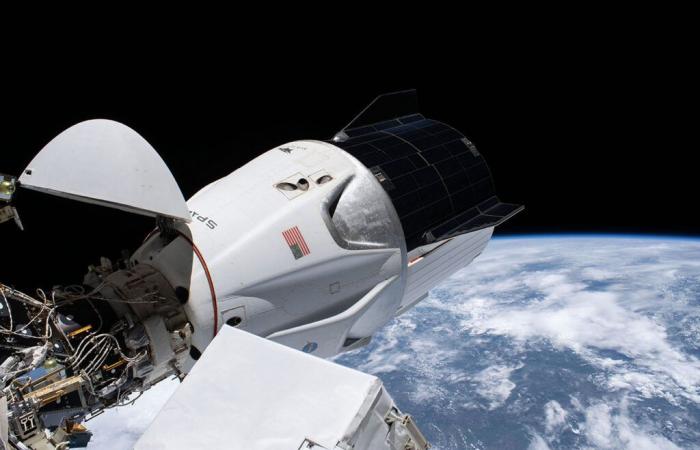SpaceX's latest resupply mission to the International Space Station (ISS) operated this Tuesday, November 5, revealed a surprise. For the 31st time, the Dragon ship delivered approximately 2,700 kg of supplies and scientific experiments, but this mission also allowed testing a new capability of the ship which could play a key role for the future of this space station.
A familiar ship, but with underestimated capabilities
First launched in 2010, the Dragon spaceship of SpaceX quickly became one of the essential elements of refueling of the International Space Station (ISS). As a cargo transport vessel, it has carried out numerous resupply missions for NASA and other space agencies and delivered a multitude of vital materials for astronauts in orbit. Over the years, it has transported thousands of tons of supplies, including food, scientific equipment, tools, spare parts and even space research experiments.
Furthermore, its unique ability to return objects to Earth after each mission sets it apart. Unlike other cargo ships, which are generally disposable and burn up upon re-entry into the atmosphere, it can land safely on Earth, allowing valuable scientific samples or equipment to be recovered. This ability to return intact has made the Dragon an indispensable tool for space missions, particularly for researchers who need to bring back experiments or data collected in space.
Recently, however, the Dragon ship has not only delivered equipment; it was put to the test for a very special demonstration. Indeed, the capsule's thrusters were used to try to move the International Space Station, a first.
A crucial maneuver test for SpaceX
THE Draco thrusters of the capsule are generally used to adjust the orbit of the Dragon ship. For the first time, they were used to move the station itself. This test was intended to explore the possibility that the ship could one day support these critical maneuvers usually provided by the Russian segment of the station. The demonstration, carried out successfully, lasted approximately 12,5 minutes.
This demonstration of maneuver is particularly important in the current geopolitical context. Since the invasion of Ukraine in 2022, tensions between the United States and Russia have indeed tested cooperation between the two countries in space. In this context, NASA is therefore seeking to reduce its dependence on Russia. This is where SpaceX's Dragon ship comes in. By being able to perform these maneuvers, it could play a crucial role for the station, even in the event of a break with the Kremlin.
Ultimately, SpaceX could become a key player in maintaining the station in orbit. We also know that Elon Musk's company is developing an improved version of its Dragon ship capable of handling deorbit operationswhich would make it possible to guide the station towards a controlled water landing to the 2030 horizon.






